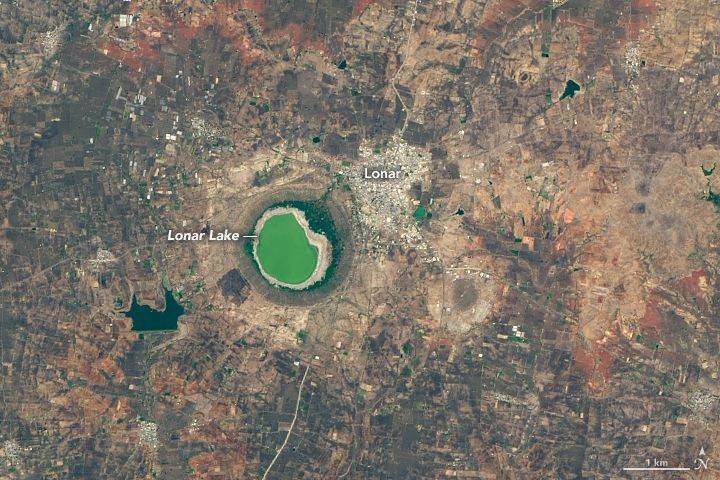NASA Satellite Images Show 50,000-Year-Old Indian Lake Turn From Green To Pink
KEY POINTS
- A 50,000-year-old lake in India turned from green to pink in a matter of days
- Satellite images of the lake show the striking difference in the color of the lake
- Scientists believe the color change is caused by high water salinity and microorganisms
Satellite images show how a lake in India changed from green to pink in a matter of a few days. So far, the reason behind the lake's color change remains a mystery but, scientists already have an idea of what may have caused it.
A 50,000-year-old lake in Maharashtra in west-central India recently surprised locals and scientists alike after it turned from its natural greenish color to rosy pink. While it is not the first time that the lake has changed its color, the recent color-change is much more vibrant and obvious than the usual.
Satellite images taken by Operational Land Imager on NASA and the U.S. Geological Service's Landsat 8 satellite show the striking change in the lake within days. In the first image, which was taken last May 25, Lonar Lake can still be seen in its natural bright green color.

The second image shows the lake from June 10 when the water has already turned a rosy shade of pink.

Lonar Lake's pinkish color is now reminiscent of the famously pink Lake Hillier in Australia, which attributes its color to the pink-colored microorganism Halobacteriaceae that thrives in water with high salinity. Also present in the Australian lake is a single-celled organism known as Dunaliella salina, which is usually green but produces protective carotenoids including the reddish beta carotene when the conditions are stressful, such as when the water's salinity is high.
However, Lake Hillier is always pink, unlike Lake Lonar, which changed color rapidly over a span of a few days.
In the case of Lonar Lake, although the exact cause of its color-change so far remains a mystery, scientists believe that it was caused by a sudden increase in salinity because of the warm weather and low water levels. This saltier water then possibly caused the microorganisms in the water to change behavior and color.
Further, considering that the lake is a popular tourist destination, the lockdown measures because of the coronavirus pandemic limited movement in the area, thereby causing the water to be undisturbed for quite some time and possibly contributing to the color change.
"It's looking particularly red this year because this year the water's salinity has increased," local geologist Gajanan Kharat explained, in a video tweet from the Maharashtra Tourism. "The amount of water in the lake has reduced and the lake has become shallower, so the salinity has gone up and caused some internal changes."
Here is a video by Mr.Gajanan Kharat, Geologist, explaining to us why the colour of #LonarCrater Lake has changed. #LonarLake #MaharashtraTourism #MaharashtraUnlimited #Lonar pic.twitter.com/plZx7YFnF8
— Maharashtra Tourism (@maha_tourism) June 11, 2020
According to NASA Earth Observatory, which shared the satellite images of the lake, Lonar Lake was once thought to have a volcanic origin but, in the 1970's, scientists confirmed the presence of maskelynite, a naturally occurring glass that only forms during extremely high-velocity impacts. This means that instead of being volcanic in origin, Lonar Lake was actually formed due to a meteorite strike some 35,000 to 50,000 years ago.
© Copyright IBTimes 2024. All rights reserved.






















